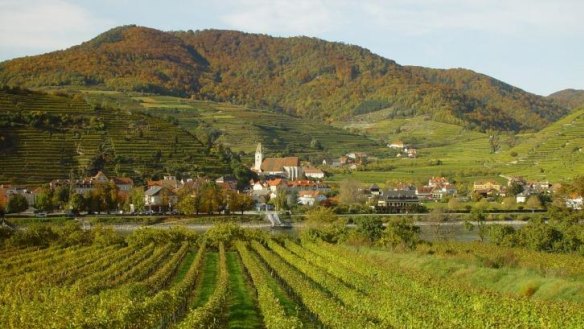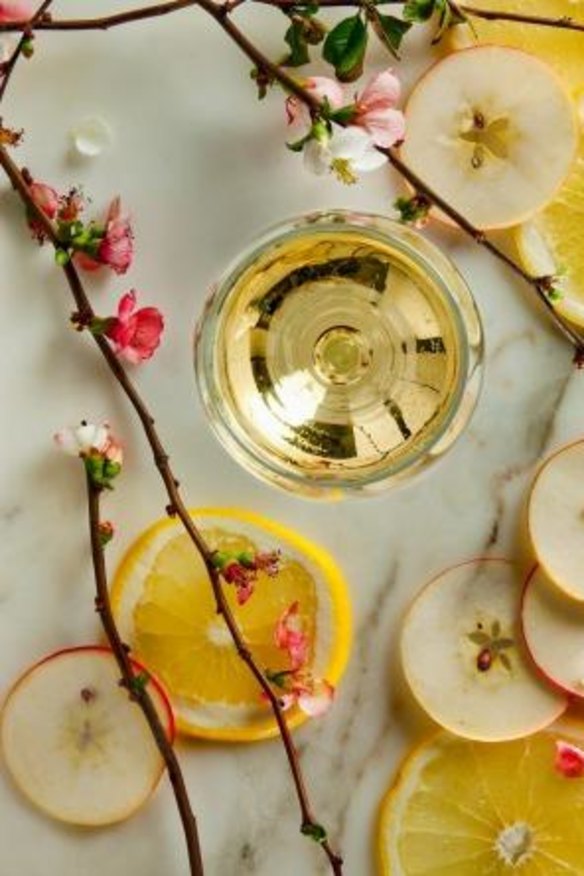Five reasons to get excited about riesling
From wild yeasts to botrytis, winemakers are pushing the boundaries in the riesling world.

I'm not going to mention a riesling renaissance. No one can agree whether it is with us or not, whether riesling is back in favour with drinkers, whether it can carry all before it, be the wine on everyone's lips. I'm not going to mention that it is great for this time of year because I don't believe it is strictly seasonal. Dry riesling when it's warm, off-dry or sweeter riesling when it gets colder, works well for me. But I will mention the recent inaugural Riesling Downunder celebration, at which nearly 2000 people got into the spirit of the grape in tastings and masterclasses in Melbourne. Something is stirring. It's hard to define but there is a gentle buzz about riesling.
So, here are five good reasons to get excited (if you're not already).
1. Give me some skin

Skins are in. Once, the purity of riesling was about capturing the essence of the grape through its juice; that lemony smack of acid that so often helps define the wine. Now, it's about grape juice in tandem with grape skins, so it's goodbye citrus bite, hello savoury softness. Before fermentation, the grapes are crushed and the juice and grape skins remain in contact with each other, sometimes for many hours, the skins seeping aromas and tannins. After fermentation, the juice might be left on its lees or dead yeast cells. An arresting creaminess and exotic, unconventional aromas can often result. Sarah Lowenstein at Heymann-Lowenstein in the Mosel, is a strong believer in skin contact for riesling. "We are aiming for structure," she says simply. Her Uhlen Laubach 2013 riesling says it all: a powerful scent of spring flowers, the full bouquet in fact, permeated with five-spice. Peach compote, ripe and fleshy citrus fruit and peel flavours and impressions move across the tongue, enhanced by a textural loveliness.
2. Cultured or wild?
The Clare Valley's Kerri Thompson of Wines By KT remembers the way it was. When she was at the helm of the Leasingham winemaking team, she wanted total control when it came time to ferment her riesling, and would use cultured yeasts to start and stop fermentations. There was a good reason for it: inoculated ferments are clean and generally result in few spoilage issues. "That was how it was done back then," she says. Now, she's gone completely wild. "When I started my own business (in 2006) I didn't have much money and I thought I would save costs by not buying yeasts but using natural yeasts." In fact, her penny-pinching opened up a bigger world of riesling flavours. "Wild ferments create really creamy, extra layers of complex flavours," she explains. Her Melva 2014 riesling offers insight into the natural yeast and ferment forces at work. A study in citrus from limes through to the sharp tang of grapefruit, Melva proceeds to deepen and expand, exploring richer, sweeter veins while maintaining striking acidity.

3. Anarchy, chaos and other things
"This is a whacko wine gone wrong," pronounced riesling specialist and author Stuart Pigott at last month's Riesling Downunder celebration in Melbourne. The whacko wine in question was Pyramid Valley's Electric Sparkling Riesling 2010, from Canterbury in New Zealand. The darling of the natural wine set, Pyramid Valley is to wine what Vivienne Westwood is to fashion: a creator of beautiful chaos. Sprouting rebellion, there are riesling makers out there like Pyramid Valley forgoing control, technology and some of the more rudimentary fundamentals of modern winemaking in their search for the dark and the ethereal. Sometimes they produce a wholly different taste. Das Sakrileg 2013 riesling from La Violetta from the Great Southern is anti-precision, everything a technical winemaker disdains: oxidised juice, wild ferment in barrel, little or no protective sulphur and ageing in old oak barrels to finish. Oh, and a "wee dram" of gewurztraminer is also added. It's crazy stuff, but get a glass in your hand and the ultra-savouriness combined with flavour intensity is somehow strangely appealing. And then sometimes, when delving into the daring world of anarchic riesling, you get - to quote the highly quotable Mr Pigott - a "freak show" where any resemblance to the riesling grape is coincidental.
4. Sweet, sweet bot
Botrytis is a mould, a fungi that grows on grapes and looks bad; rotting vegetation comes to mind, but it can taste grand. It's employed in winemaking to deliver lusciousness and an extravagant sweetness in dessert wines. But botrytis can also appear in rieslings that taste, to many, as almost dry. You might pick up a honey smoothness to the wine, far from obviously sweet but not especially dry either. It's a complexing agent. Lucas Pichler of celebrated Austrian riesling maker FX Pichler, employs small quantities of botrytis in some of his wines. "There can be a little bit of botrytis," he explains, "maybe five to 10 per cent or less." It helps maintain a perception of intense fruitiness but can also bring elegance and weight. Pichler's 'M' 2013 riesling from the Wachau helps explain the phenomenon well, a wall of honeyed, jasmine fruit intensity that glides.
5. The Wurzelwerk riesling project
What started out as "homework" for young German winemakers Johannes Hasselbach (Gunderloch) and Max Von Kunow (Von Hovel) and Austria's Stephanie and Alwin Jurtschitsch (Jurtschitsch) is today one of the riesling world's more fascinating studies into the grape. In 2012, the winemakers swapped fruit and made one riesling each from a single site on each other's estates. "We had all inherited vineyards at the same time and we wanted to understand our own vineyard site better," explains Hasselbach. Three years into the project, Hasselbach admits he has more questions than answers. "We were naive." The nine project wines from the inaugural 2012 vintage are stunningly independent of each other, reflecting the forces of nature rather than the individual. It has led Hasselbach to further research the role of the winery versus the vineyard on taste, and to making wine in 2013 in the vineyard, the great outdoors, rather than in a conventional cellar. A tiny parcel of Wurzelwerk wines is available in Australia, a nine-pack of 500ml wines for $960 at Milton Wine Shop, Malvern.
- More:
- Drinks